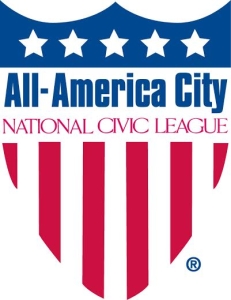NCDD members might want to check out the All-America Conversations initiative being hosted by the National Civic League, an NCDD member organization. NCL is encouraging communities across the country to host short, public conversations focused on questions of how we can begin #BridgingOurDivides, showing that our country can still work together. They are providing a toolkit and webinar training series to help conversation hosts plan and convene these events, and we encourage practitioners in our network to consider hosting one yourself. You can learn more in the NCL announcement below or by learning more here.
All-American Conversations: Bridging Divides. Building Community.
 National Civic League is launching All-America Conversations to demonstrate that locally, we are still able to work together across dividing lines to create stronger, more equitable communities.
National Civic League is launching All-America Conversations to demonstrate that locally, we are still able to work together across dividing lines to create stronger, more equitable communities.
Communities that host All-America Conversations will:
- Better understand residents’ aspirations for the community
- Learn how residents talk about and see community challenges and divisions
- Gain clear insight into what small actions would give people confidence that we can work together across dividing lines
- Help residents engage with one another in a productive conversation
- Demonstrate a commitment to inclusive engagement
All-America Conversations are designed to help cities and other groups understand residents’ aspirations for the community, the divisions facing the community and, most importantly, the small, specific actions that give people a sense of confidence that we can work across dividing lines.
The format/template for All-America Conversations is flexible and scalable. Some communities will decide to focus on engaging underrepresented residents about their specific concerns and perspectives. Others will hold conversations designed to bring together people on different sides a specific divide to talk with one another and explore shared values. Some communities will use these questions and conversations as part of a large public meeting with breakout conversations.
Conversation Resources and Support
All-America Conversation Toolkit
Everything necessary to hold a productive and meaningful conversation – just add residents.
The toolkit walks you through:
- How to identify whom you want to engage and how to recruit participants
- Where to hold the conversations
- How to set up the room
- Selecting and preparing facilitators and note takers
- What questions to ask
- How to adapt the conversation guide to different types of meetings
The kit also includes a tips for facilitators and note takers, a note taking tool, ground rules, a sign-in sheet, sample recruitment letter, sample email to engage the media around these conversations.
Download the Toolkit and other resources
Support and Coaching Calls
NCL is hosting a series of 1-hour conference calls to provide support for communities or organizations hosting All-America Conversations. Calls will include a brief overview of the purpose and potential of these conversations and available resources. The main focus is providing local communities with the support, coaching and guidance necessary to make the conversations work for them. So, each call will include dedicated time for support and coaching from NCL experts to help you adjust the conversations to fit with existing efforts, your local context, staff resources and community needs.
You can watch the Jan. 31st, 2017 toolkit webinar here:
You can find the original version of this National Civic League announcement at www.nationalcivicleague.org/all-america-conversations









